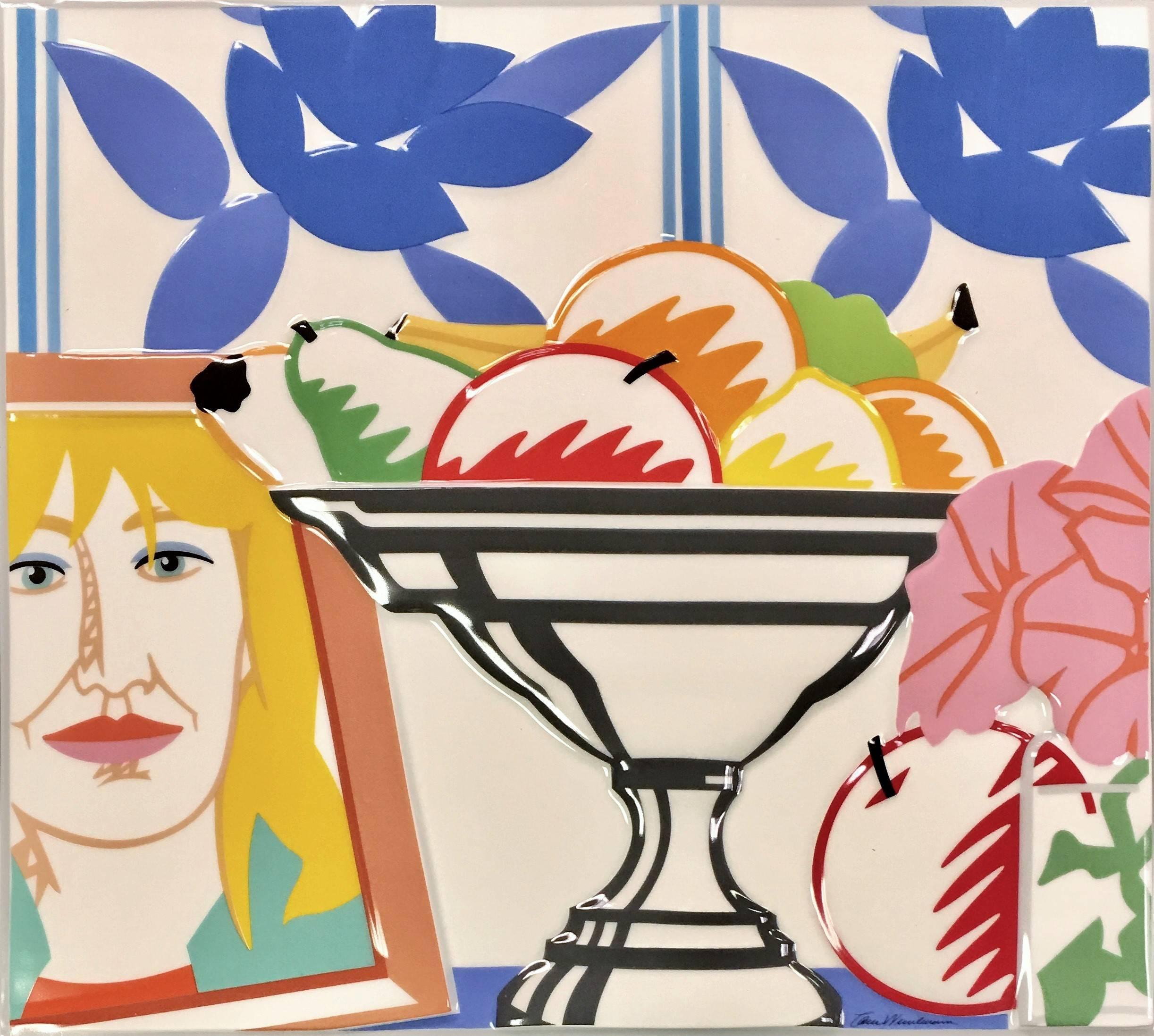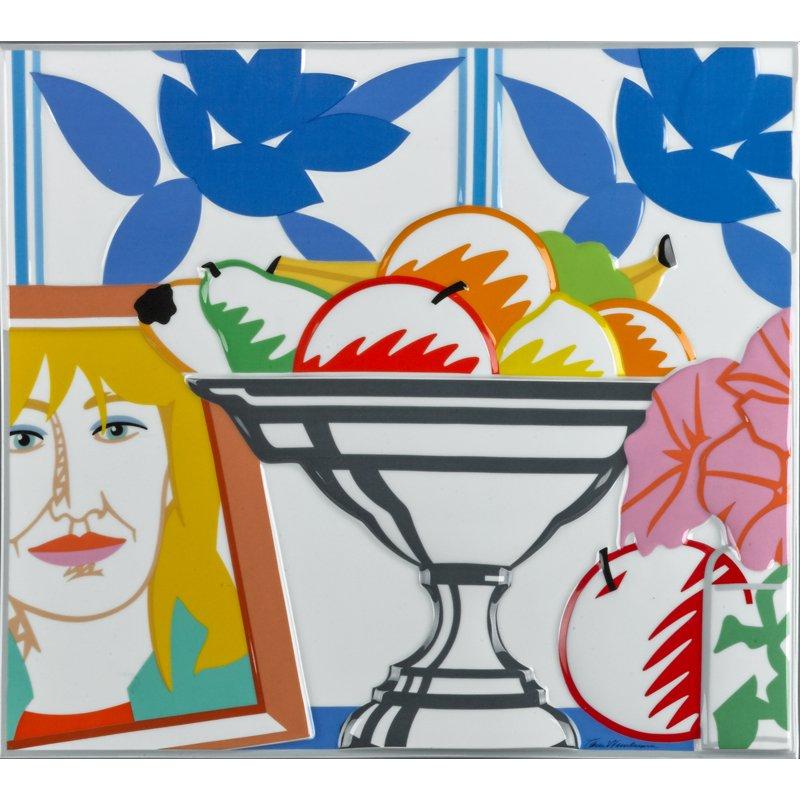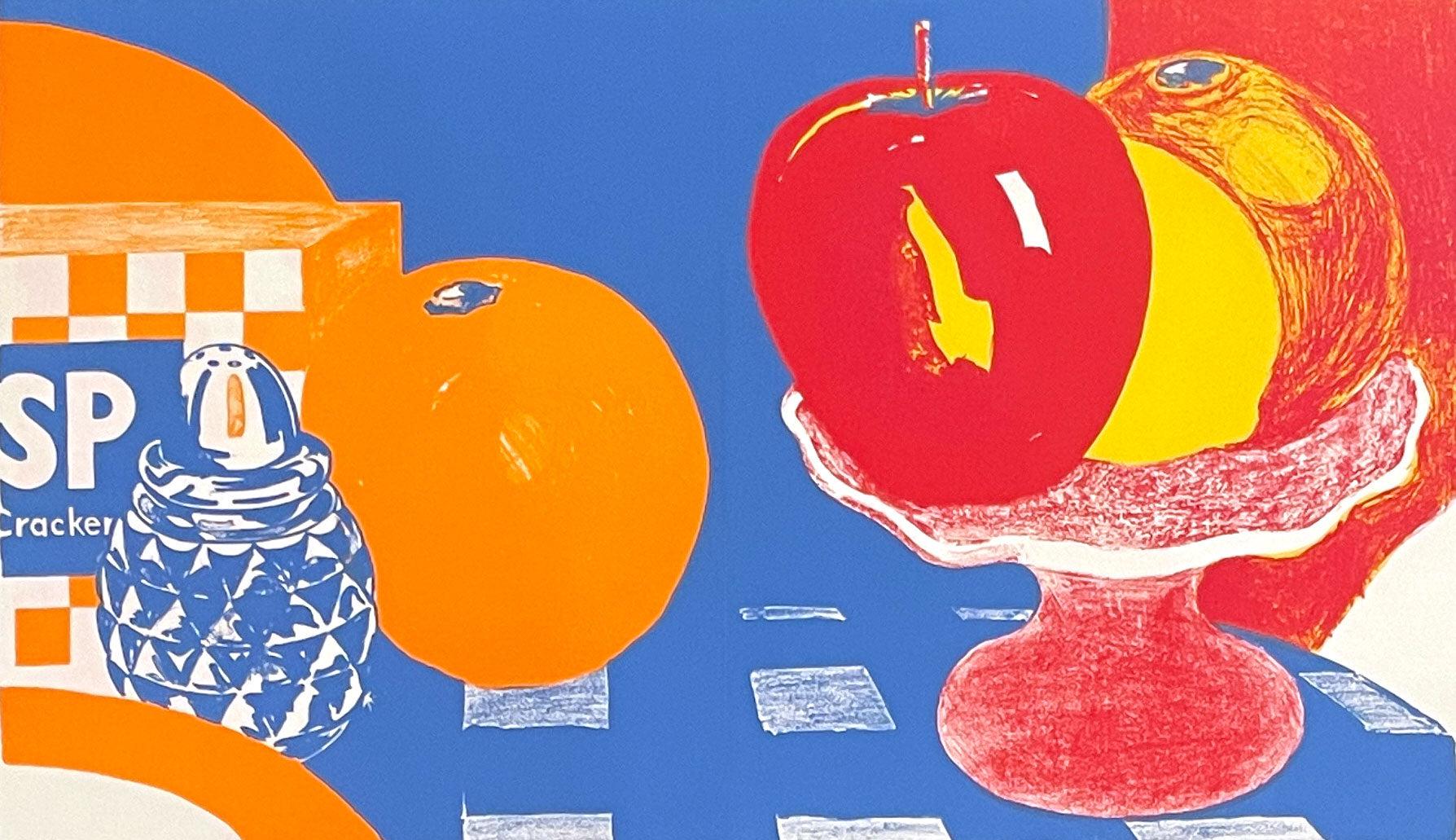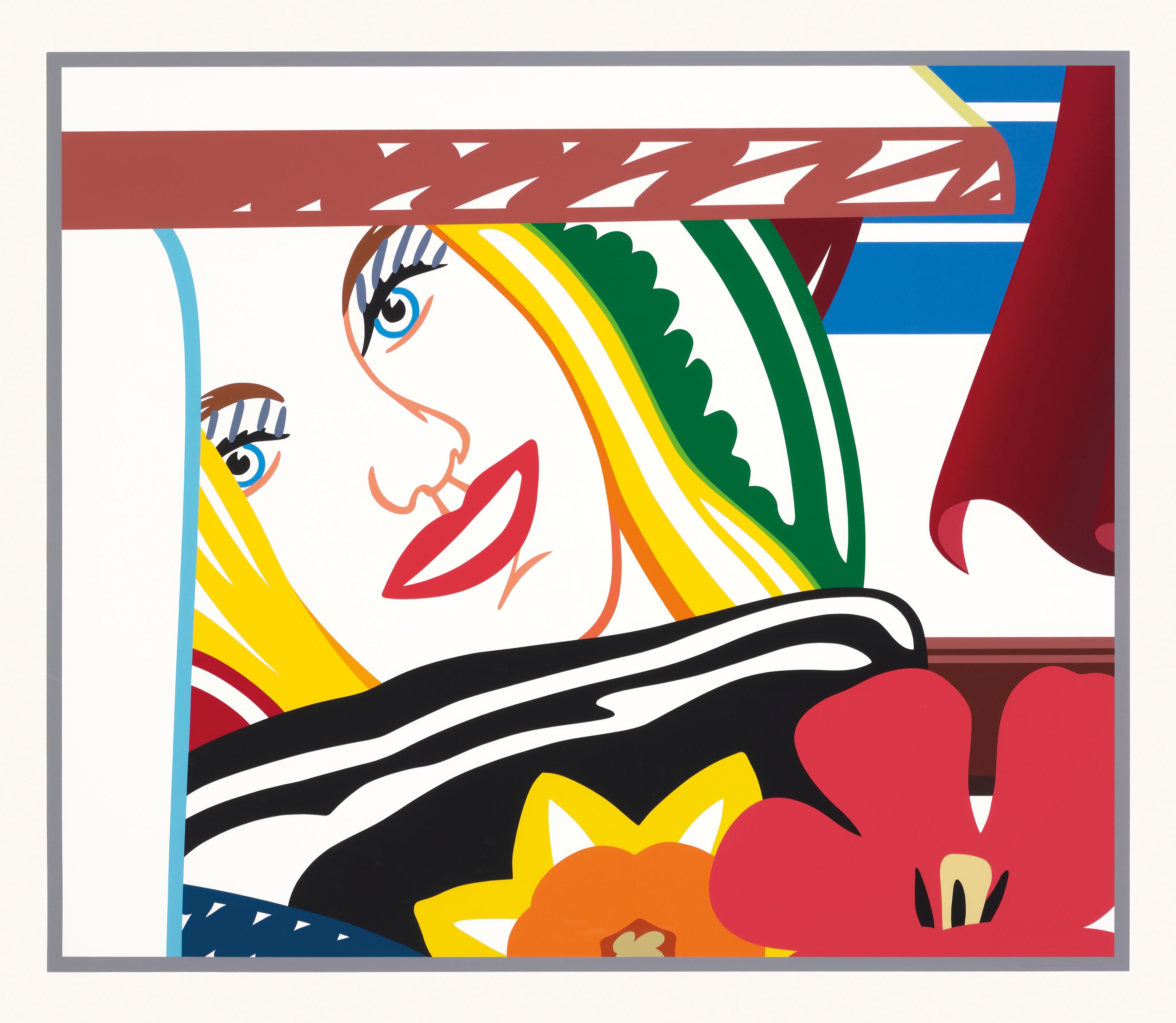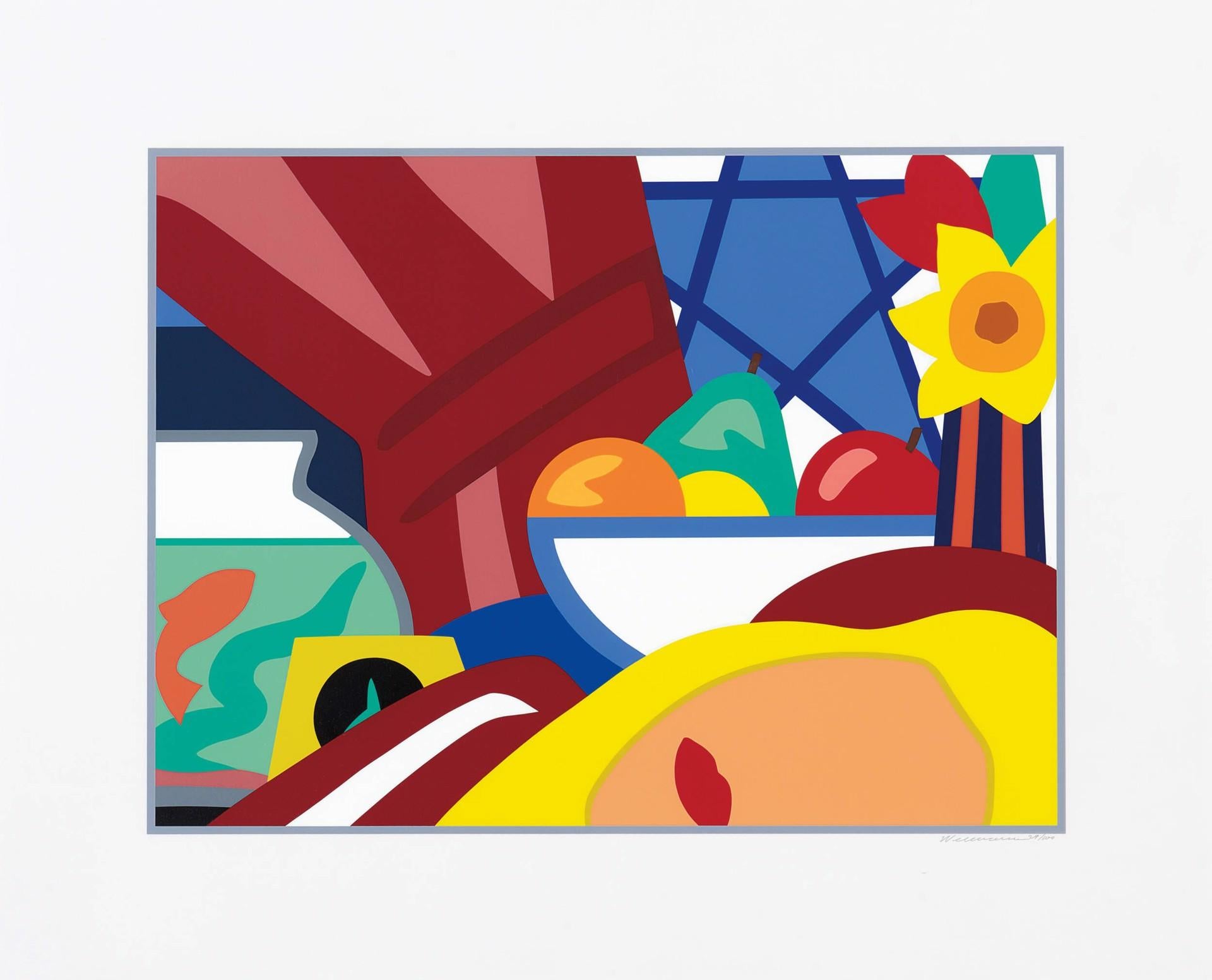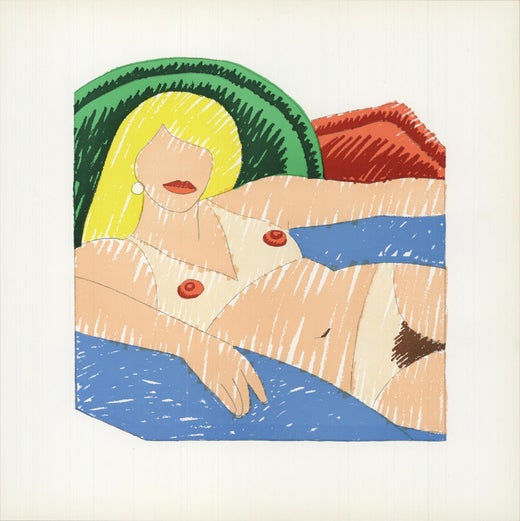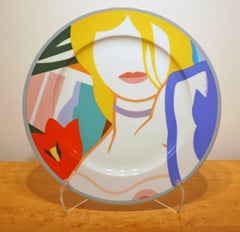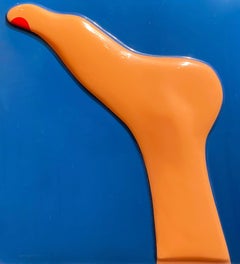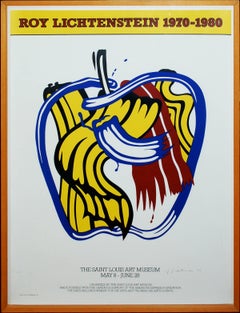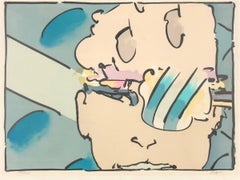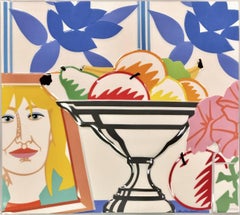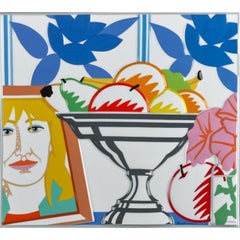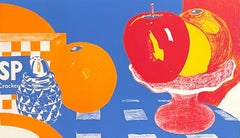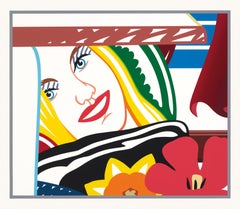Items Similar to Still Life on Porcelain
Want more images or videos?
Request additional images or videos from the seller
1 of 7
Tom WesselmannStill Life on Porcelain1988
1988
Price Upon Request
Price Upon Request
Price Upon Request
Price Upon Request
Price Upon Request
Price Upon Request
Price Upon Request
Price Upon Request
Price Upon Request
Price Upon Request
About the Item
Tom Wesselmann, (1931-2004)
"Still Life" (Stilleben) 1988
Porcelain with Polychrome
Ed. 169/299
Porcelain Size: approx. 13 x 14 inches
Overall Size: approx. 18 3/4 x 20 inches
Found./Pub. Rosenthal
Known for his Pop-Art nude figures--the Great American Nude Series--as well as collages, often with food themes, Tom Wesselmann is a Cincinnati born artist who studied at the Art Academy of Cincinnati and at Cooper Union* in New York City in the late 1950s.
When he was a student at Cooper Union, he was much influenced by Abstract Expressionism*, especially painters Willem de Kooning and Jackson Pollock. However, he turned away from that style because he determined these artists had become so introspective that there was little room for creative exploration by others.
His reaction took him to Pop Art, the other extreme of action painting to a tightly controlled style and subject matter that was mundane--the antithesis of psychological complexities. Joining a rebellion against the New York School of Abstract Expressionists that which had become the establishment, he, like Andy Warhol and Wayne Thiebaud, asserted that everyday objects had significance unto themselves and that they were worthy of depiction because of a common understanding about what they were.
Of this reaction, Norman Geske, Director of Sheldon Memorial Art Gallery, wrote, "The swing of the pendulum was complete, from the esoteric to the commonplace, from passionate individualism to the popular language of the marketplace. The new point of view was not merely popular, it was 'pop,' assertive, declamatory, defiant, achieving a stylistic identity in the soup cans of Andy Warhol, the comic strips of Roy Lichtenstein, the billboards of James Rosenquist, and the domestic icons of Tom Wesselmann."
In 1959, Wesselmann began his collages, which show influence of modernist artists ranging from Willem de Kooning to Henri Matisse. These collages were usually interior scenes with nude figures, a subject he did so repeatedly that it seemed an obsession. During the mid-1960s, he focused solely on female nudes, presenting them as sex objects with emphasis on breasts, mouth, and genitalia.
- Creator:Tom Wesselmann (1931 - 2004, American)
- Creation Year:1988
- Dimensions:Height: 18.75 in (47.63 cm)Width: 20 in (50.8 cm)Depth: 1 in (2.54 cm)
- Medium:
- Movement & Style:
- Period:
- Condition:
- Gallery Location:Missouri, MO
- Reference Number:1stDibs: LU74735527772
Tom Wesselmann
Thomas K. Wesselmann (February 23, 1931 – December 17, 2004) was an American artist associated with the Pop Art movement who worked in painting, collage and sculpture. Born on February 23, 1931, in Cincinnati, Ohio, cartoonist and collagist Tom Wesselmann eventually moved to New York City to become one of the founding figures of the Pop Art movement, making waves with his "Great American Nude" series. He later became well known for his huge canvas paintings of household objects as well as his printmaking and abstract work. He died on December 17, 2004.
About the Seller
5.0
Vetted Professional Seller
Every seller passes strict standards for authenticity and reliability
Established in 1970
1stDibs seller since 2017
155 sales on 1stDibs
Typical response time: Several days
- ShippingRetrieving quote...Shipping from: Missouri, MO
- Return Policy
Authenticity Guarantee
In the unlikely event there’s an issue with an item’s authenticity, contact us within 1 year for a full refund. DetailsMoney-Back Guarantee
If your item is not as described, is damaged in transit, or does not arrive, contact us within 7 days for a full refund. Details24-Hour Cancellation
You have a 24-hour grace period in which to reconsider your purchase, with no questions asked.Vetted Professional Sellers
Our world-class sellers must adhere to strict standards for service and quality, maintaining the integrity of our listings.Price-Match Guarantee
If you find that a seller listed the same item for a lower price elsewhere, we’ll match it.Trusted Global Delivery
Our best-in-class carrier network provides specialized shipping options worldwide, including custom delivery.More From This Seller
View AllBlonde Vivienne
By Tom Wesselmann
Located in Missouri, MO
Blonde Vivienne, 1985-86
Transfer-printed service plate in colors. Diameter: 12 in. (30.5 cm). published by Rosenthal, Limited Edition, Germany
Category
1980s Pop Art More Art
Materials
Ceramic
Price Upon Request
Seascape (Foot)
By Tom Wesselmann
Located in Missouri, MO
"Seascape" (Foot) 1967
Screenprinted Vacuum-Formed Plexiglass In Colors
Scratch-Signed, Dated and Numbered 92/101
14 1/4 x 12 15/16 x 3/4 in (36.1 x 32.9 x 2 cm).
Known for his Pop-...
Category
1960s Pop Art Figurative Prints
Materials
Plexiglass, Screen
Price Upon Request
Apple (Poster) -- signed
By Roy Lichtenstein
Located in Missouri, MO
Hand-Signed and dated Lower Right
Original screenprint poster in yellow, red, blue an black on white wove paper. Designed by the artist for a traveling exhibition for the Saint Lou...
Category
1980s Pop Art Still-life Prints
Materials
Screen
Price Upon Request
Zero Horizontal (Zero I)
By Peter Max
Located in Missouri, MO
Peter Max
"Zero Horizontal" (Zero I) 1973
Color Lithograph
Ed. 194/300
Signed and Numbered
Framed Size: approx. 32 x 25 inches
Print Size: approx 20 x 26 inches
Peter Max is a multi-dimensional artist focused on contemporary events. When he left art school in the 1960s he began producing, "cosmic imagery . . . that caught on right away, and before you knew it, I got an eight-page cover story in Life magazine." He explores all media, including mass media as a "canvas" for his creative expression.
His decorative designs are on a Boeing 777 Continental, Dale Earnhardt's #3 Millennium race car, U.S. postage stamps and 235 U.S. border murals. He created two 155-foot murals for the U.S. Pavilion at the Seville World's Fair in Spain, 12 postage stamps for the Earth Summit in Rio de Janeiro, Brazil, and a 600-foot stage mural for Woodstock 2. He has also painted for five U.S. presidents, as well as the Beatles, Aerosmith and the Rolling Stones.
After September 11th, 2001 Peter Max began a project by finishing 356 portraits of the firefighters that were lost in the attack. His portraits were then given to the victims' families. In addition, from a special request from President George W. Bush, he recently created another 356 portraits for a firefighters' memorial.
Peter Max has worked with oils, acrylics, water colors, finger paints, dyes, pastels, charcoal, pen, multi-colored pencils, etchings, engravings, animation cells...
Category
1970s Pop Art Figurative Prints
Materials
Lithograph
Floral Still Life in Fluted Bowl
Located in Missouri, MO
Floral Still Life in Fluted Bowl
Franz Leitgeb (Austrian, 1911-1997)
Signed Lower Right
33 x 27 inches
38.5 x 32 inches
Category
20th Century Realist Still-life Paintings
Materials
Canvas, Oil
Price Upon Request
Summer Still Life, Wine, Melons and Fruit
By Henry Lee McFee
Located in Missouri, MO
Summer Still Life, Wine, Melons and Fruit
Henry Lee McFee (American, 1886-1953)
Watercolor on Paper
Signed Lower Right
14 x 19 inches
22.75 x 28.75 inches with frame
Henry Lee McFee...
Category
20th Century Cubist Still-life Drawings and Watercolors
Materials
Paper, Watercolor
Price Upon Request
You May Also Like
Tom Wesselmann, Still Life (Rosenthal Porcelain Object), 1988
By Tom Wesselmann
Located in Chatsworth, CA
Tom Wesselmann
Still Life, 1988
Rosenthal Porcelain Object
Measures 13 x 14 3/4 x 1/2 inches.
Signed in lower right corner
From the edition of 299, within the accompanying certificat...
Category
1980s Pop Art Still-life Prints
Materials
Porcelain
STILL LIFE CERAMIC
By Tom Wesselmann
Located in New York, NY
ceramic relief sculpture, glazed in colors.
Bold colors.
Edition 186/200
In original wooden box (22 x 24 x 4 3/4")
Category
1980s 85 New Wave Still-life Sculptures
Materials
Ceramic, Glaze
Still Life with Fruit, from 1¢ Life
By Tom Wesselmann
Located in Washington, DC
Artist: Tom Wesselmann
Title: Still Life with Fruit
Portfolio: 1¢ Life
Medium: Lithograph in colors
Year: 1964
Edition: 2000
Frame Size: 20 5/8" x 29 1/2"
Sheet Size: 16 1/4" x 22 3/...
Category
1960s American Modern Still-life Prints
Materials
Lithograph
FROM BEDROOM PAINTING #41
By Tom Wesselmann
Located in Aventura, FL
Screenprint on museum board. Hand signed and numbered by the artist. Edition of 100. Published by International Images, Putney, Vermont. Sheet size 59 x 68 inches. Artwork is in e...
Category
1990s Pop Art Portrait Prints
Materials
Board, Screen
Still Life with Blonde, 1999, Limited edition signed by Tom Wesselmann
By Tom Wesselmann
Located in Hong Kong, HK
Still Life with Blonde (1999)
Edition 29/100
Silkscreen on Museum Board
53.3 x 71.2 (image)
76.2 x 93.98 cm (sheet)
Publisher: Cooper Square Prints
Printer: Steve Maiorano, Screened ...
Category
1990s Prints and Multiples
Materials
Screen
UNICEF Bouquet - Tom Wesselmann, Pop Art, Still-life, Print, Screenprint
By Tom Wesselmann
Located in London, GB
Screenprint in colours, 1998.
From 'Meine Kindheit - Schmerz und Heilung, UNICEF'.
Signed in pencil, numbered from the edition of 100.
Image: 63.5 x 54.5 cm Sheet: 78.8 x 70 cm
Category
1990s Pop Art Still-life Prints
Materials
Screen
More Ways To Browse
Kaws Uk
Line Art Pencil
Man In Black Suit
Man Ray Photograph
Marcelo Martin Burgos
Masson Painter
Mid Century Walking Man Sculpture
Nightmare Before Christmas
Oil Paintings Of Deer
Orlinski Kong Sculpture
Painter Augustus
Pearl Royale
Peter Clay
Picasso Head Sculpture
Polo Pony
Portrait Handsome Man
Red Fox Oil Paintings
Ruan Hoffmann
